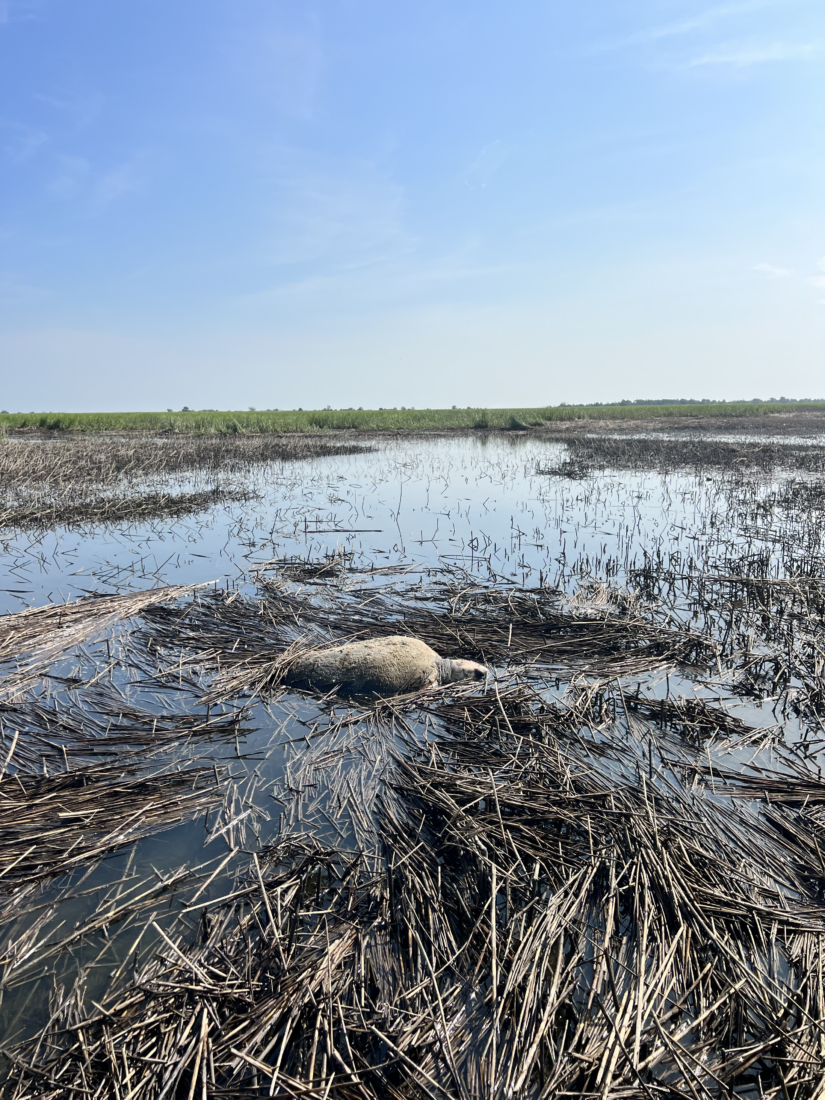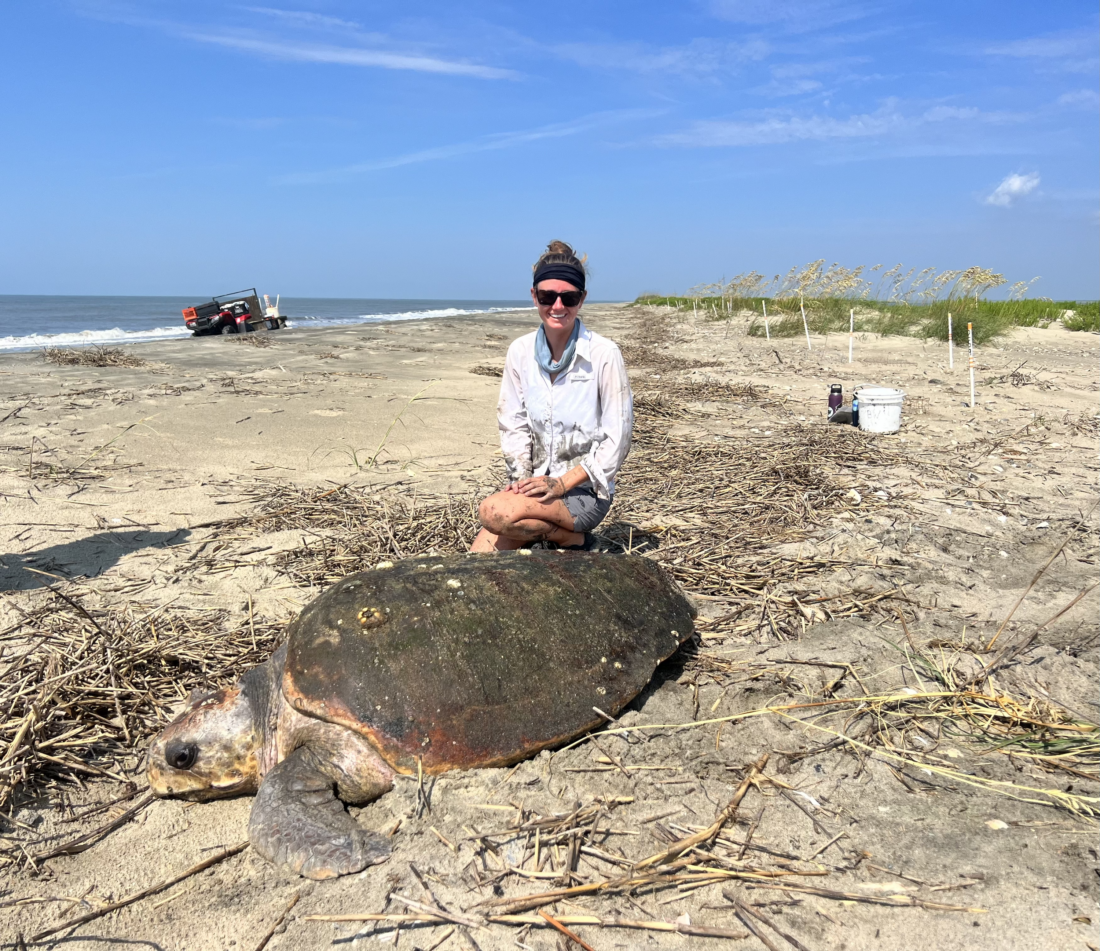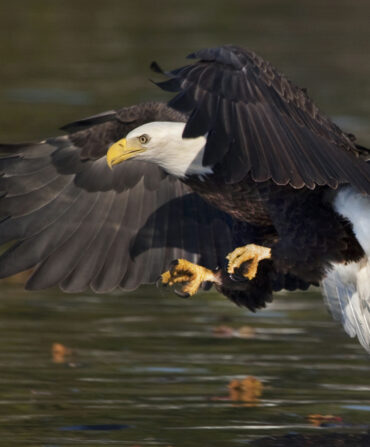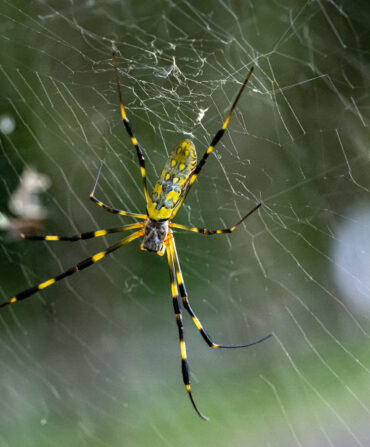If you’re an egg-laden sea turtle swimming off the South Carolina coast this time of year, there’s a good chance you’re heading to Cape Romain National Wildlife Refuge. Indeed, 40 percent of all sea turtle nests in the state are found on the federally protected, twenty-two-mile crescent of barrier islands just north of Charleston harbor.

More than 2,600 nests have been documented so far this season. Many of these threatened loggerheads, joined by a few green sea turtles, have a special affinity for outermost Cape Island. The problem is that erosion has flattened the dunes that separate the long, skinny beach from a salt marsh backside, allowing turtles to wander in the wrong, potentially lethal direction instead of returning to the ocean as nature intends.
The video below, recently taken by Abigail King, a field technician contracted by the U.S. Fish and Wildlife Service during the May-through-October nesting season, demonstrates the lengths to which she and her coworkers go to rescue these beautiful creatures.
“We’ve had several mama turtles get disoriented this season,” says King, who knows Cape Romain especially well—she works as a staffer with the conservation-minded local tour provider Coastal Expeditions between nesting seasons. “Some can figure it out on their own, but we’ve had several that we’ve needed to redirect.”
In this case, King and an intern were making rounds when they spotted the turtle’s telltale tracks exiting her nest on the wrong heading. “She’s already laid eggs,” King says of that moment, “and the tracks lead into the marsh on the wrong side of the island. I need to make sure she made it out, but the tracks go deeper in. Then I find her stranded in the marsh muck and a couple inches of water.”
The video shows the loggerhead in obvious distress, and going nowhere on her own. “She’s tired from nesting, and stressed. She’s exhausted,” King says. “That little bit of water, which would be gone in an hour, has saved her so far. The heat index is over a hundred degrees, and there’s no wind. If we don’t move her, she’ll be dead soon.”

King and crew sprang into action, which is easier said than done when attempting to budge a three-hundred-pound, truck tire–proportioned turtle. “She’s an old lady, more than fifty or sixty years old, maybe even a hundred, the largest female loggerhead I’ve encountered,” King says. “Trying to move that in pluff mud is hard. We’re sweating bullets.”
Nevertheless, they gripped the shield-size shell, hoisted the turtle back to sandy terrain, and aimed it toward the ocean. They draped wet towels across her shell to curb overheating. “We get out the sling because she’s refusing to move and we’re going to drag her,” King says. “But when we pull it out, I guess it gets her moving, and once they hit the sand, their instincts kick in. It’s certainly better for our backs if they can do it on their own.”
The loggerhead laboriously dragged herself along (the video is greatly sped up), and when she finally found lapping waves, perked up and paddled off into the surf. Even lacking a proper thank you, the rescuers gave a victory shout—and then got back to work.
For King, that demanding schedule typically starts at 5:00 a.m. on the mainland, loading and trailering boats to a landing for a twenty-minute sunrise ride to the refuge. From there, she hops on an ATV and conduct nest surveys, documents “false crawls” from the ocean that didn’t result in nests, and even carefully relocates eggs laid below the high-tide line. As the day progresses, so do the heat, bugs, and odds of inclement weather. “We’re pretty big mammals in a wild place, so the bugs will find us,” King says. “The worst isn’t the mosquitos, it’s the black flies. They bite and hurt, and they’re awful.”
There is no breakroom, or any other shelter, inside which to escape this insectoid persecution. “When storms and lightning hit,” King says, “we just hunker down and wait it out.”
Please note: If you happen upon a stranded sea turtle, call your local natural resources department. It is illegal to touch sea turtles or their nests without a permit.








